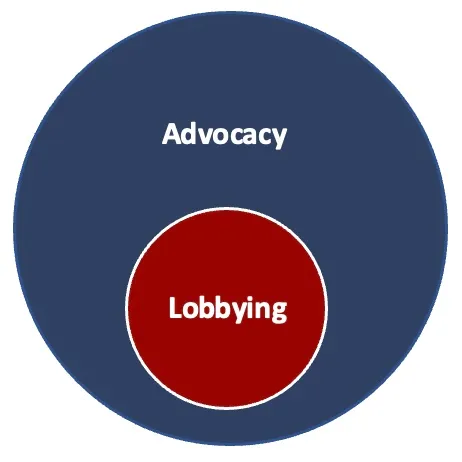
Advocacy and Lobbying are related but distinct strategies used to influence public policy, decision-makers, and public opinion. Here's a clear breakdown of both terms:
1. Advocacy
Definition:
Advocacy is the act of supporting a cause or proposal. It involves raising awareness, educating the public or policymakers, and pushing for changes in laws, policies, or social norms.
Key Features:
-
Broad in scope: Can include public campaigns, community organizing, media outreach, and more.
-
Non-partisan: Often carried out by non-profits, civil society organizations, or individuals.
-
Focus: May aim to influence public opinion, mobilize communities, or inform policymakers.
Examples:
-
Campaigning for climate action.
-
Promoting mental health awareness.
-
Organizing petitions to improve access to education.
2. Lobbying
Definition:
Lobbying is a specific form of advocacy that involves direct interaction with lawmakers or government officials to influence legislation or policy decisions.
Key Features:
-
Targeted and strategic: Often involves meetings with legislators, submitting position papers, or testifying at hearings.
-
Usually regulated: In many countries, lobbying is subject to laws requiring registration and disclosure.
-
Conducted by: Professional lobbyists, businesses, unions, NGOs, or advocacy groups.
Examples:
-
A healthcare company lobbying for favorable drug pricing regulations.
-
An environmental group meeting with senators to oppose a deforestation bill.
-
A labor union pushing for stronger worker protections in legislation.
Key Differences at a Glance:
| Feature | Advocacy | Lobbying |
|---|---|---|
| Scope | Broad and general | Narrow and specific |
| Methods | Public campaigns, education, outreach | Direct contact with lawmakers |
| Regulation | Generally not regulated | Often legally regulated |
| Goal | Raise awareness, build support | Influence legislation or policy directly |
- Teacher: Admin User